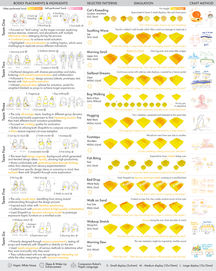
2025
Shape-Kit
A Design Toolkit for Crafting On-Body Expressive Haptics
Ran Zhou, Jianru Ding, Chenfeng Gao, Wanli Qian, Benjamin Erickson, Madeline Balaam, Daniel Leithinger, Ken Nakagaki
About
Driven by the vision of everyday haptics, the HCI community is advocating for “design touch first” and investigating “how to touch well.” However, a gap remains between the exploratory nature of haptic design and technical reproducibility. We present Shape-Kit, a hybrid design toolkit embodying our “crafting haptics” metaphor, where hand touch is transduced into dynamic pin-based sensations that can be freely explored across the body. An ad-hoc tracking module captures and digitizes these patterns. Our study with 14 designers and artists demonstrates how Shape-Kit facilitates sensorial exploration for expressive haptic design. We analyze how designers collaboratively ideate, prototype, iterate, and compose touch experiences and show the subtlety and richness of touch that can be achieved through diverse crafting methods with Shape-Kit. Reflecting on the findings, our work contributes key insights into haptic toolkit design and touch design practices centered on the “crafting haptics” metaphor. We discuss in-depth how Shape-Kit’s simplicity, though remaining constrained, enables focused crafting for deeper exploration, while its collaborative nature fosters shared sense-making of touch experiences.
Other Videos:
Team Credits:
Ran Zhou (UChicago, KTH) - Project Lead, System and Study Design
Jianru Ding (UChicago) - Software Development and Study Support
Chenfeng Gao (UChicago, Northwestern) - Software Development and Study Support
Wanli Qian (UChicago, USC) - Software Development and Study Support
Benjamin Erickson (CU Boulder) - Mechanism Design Support
Madeline Balaam (KTH) - Project Co-advisor
Daniel Leithinger (Cornell) - Project Co-advisor
Ken Nakagaki (UChicago) - Project Co-advisor
Acknowledgements:
Co-funded by the European Union (ERC, Intimate Touch, 101043637).
Jianru Ding’s work on this project was partially funded by Army Research Office contract number W911NF22C0082 and supported by the Intelligence Advanced Research Projects Administration (IARPA).
Special thanks to: Human-Computer Integration Lab, Self-aware Computing Group, Prof. Hank Hoffmann, Prof. Harpreet Sareen, Prof. Ryo Suzuki, Ramarko Bhattacharya, Anup Sathya, Willa Yang, Emilie Faracci, Jasmine Lu, Ran's Parents























